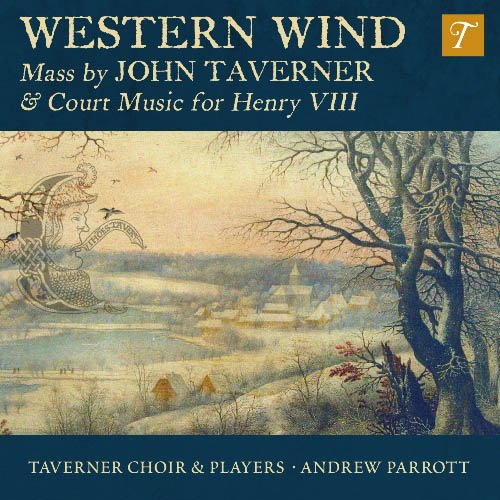Taverner Choir, Players & Andrew Parrott - Western Wind: Music By John Taverner & Court Music For Henry VIII (2016) [CD Rip]

Artist: Taverner Choir, Players & Andrew Parrott
Title: Western Wind: Music By John Taverner & Court Music For Henry VIII
Year Of Release: 2016
Label: Avie Records
Genre: Classical
Quality: FLAC (image + .cue, log, artwork)
Total Time: 79:20 min
Total Size: 329 MB
WebSite: Album Preview
Tracklist:Title: Western Wind: Music By John Taverner & Court Music For Henry VIII
Year Of Release: 2016
Label: Avie Records
Genre: Classical
Quality: FLAC (image + .cue, log, artwork)
Total Time: 79:20 min
Total Size: 329 MB
WebSite: Album Preview
01] Anon.: The western wynde
02] Chant: Kyrie
03] Taverner: Mass 'The Western Wynde' - Gloria
04] Anon.: My lady Careys dompe
05] Taverner: Mass 'The Western Wynde' - Credo
06] Henry VIII: If love now reynyd
07] Chant: Preface
08] Taverner: Mass 'The Western Wynde' - Sanctus
09] Anon.: My lady Wynkfylds rownde
10] Taverner: Mass 'The Western Wynde' - Agnus
11] Anon.: O blessed Lord, how may this be
12] Cornysh: Yow and I and Amyas
13] Aston: A Hornepype
14] Anon.: Where be ye my love?
15] Cornysh: Fa la sol
16] Henry VIII: Taunder naken
17] Taverner: Audivi vocem de caelo
18] Taverner: In nomine
19] Taverner: Dum transisset sabbatum
20] Anon.: Westron Wynde
21] Anon.: Western winds
What you have here is a well-performed sampling of music from England in the early 16th century. Because of the way the program is organized, the listener's mind may try to organize it into something more coherent than that, but it may not succeed. The centerpiece is the Western Wind Mass of John Taverner, which is broken up with secular pieces and then followed by music that might have been heard at the court of Henry VIII. This doesn't correspond to any program that would have been heard in Henry's time; chant and polyphonic sacred pieces, not secular songs, would have been interspersed among the sections of a mass. The justification given for this procedure is that Taverner's mass is exceptional among English masses for using a secular cantus firmus, but this doesn't quite explain why secular pieces should be mixed into it. The good news is that much of the music, taken on its own terms, is exceptionally beautiful. Sample the limpid pastoral song You and I and Amyas of William Cornysh (track 12), whose text in the booklet is helpfully glossed with translations of a few of the more obscure English words. The sacred pieces, in line with scholarly arguments by Taverner Choir & Players leader Andrew Parrott, are sung in a lower range than usual; this has a profitable effect that makes the music less ethereal and more immediate. With a mix of a cappella singing, instrumental ensemble pieces, keyboard music, and vocal solos, there is a greater variety for the casual listener than in most other Renaissance recordings, and it's all very musically done. Recommended even though some may ask exactly why the program contains the things it does. -- James Manheim

![Frank Sinatra - Christmas (Remastered) (2013) [Hi-Res] Frank Sinatra - Christmas (Remastered) (2013) [Hi-Res]](https://www.dibpic.com/uploads/posts/2025-12/1765618088_fsc500.jpg)


![RAS - Rød i Blå (2025) [Hi-Res] RAS - Rød i Blå (2025) [Hi-Res]](https://www.dibpic.com/uploads/posts/2025-12/1765847447_s09xuo23tcu1a_600.jpg)



![Travis Jenkins Piano Trio - Jazz in Meanjin 020 (Live at JMI) (2025) [Hi-Res] Travis Jenkins Piano Trio - Jazz in Meanjin 020 (Live at JMI) (2025) [Hi-Res]](https://www.dibpic.com/uploads/posts/2025-12/1765862611_a2068783921_10.jpg)